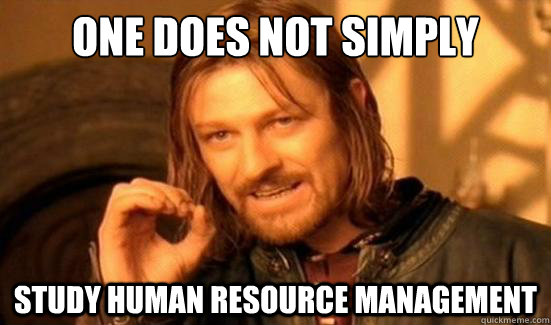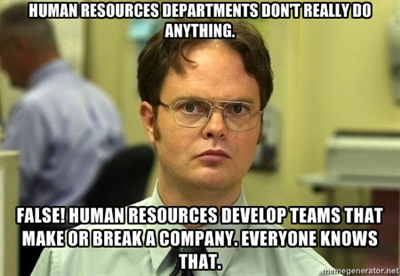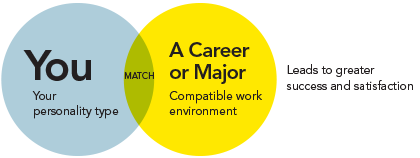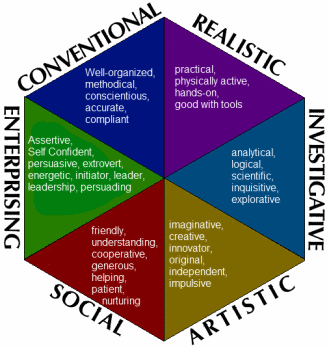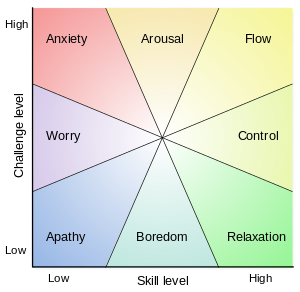
Courtesy of Google Images
The Earth is a complex environment that relies on all parts of the ecosystem to survive and thrive in the long term, yet, if one component were to be taken out, depending on importance and impact, the ecosystem could either adapt or crumble. One of the most basic organisms in this vast ecosystem is the ant. Ants arose more than 168 million years ago and today they are a large part of terrestrial ecosystems across the world. Ants have survived a long time yet have not evolved as much compared to other organisms, thus exemplifying that their process has been working for millions of years and there is no need to change it. But what is behind their success? The ability to socialize. Like humans who build vast cities, ants are social creatures which form colonies that range from small structures to one’s large enough to contain millions of ants.
Humans and ants are biologically different in the sense that humans are much more complex organisms with a higher consciousness, however, the processes and organizational structures that ants use to achieve success and longevity are similar to humans.
How on Earth could ants possibly be connected to organization and administration? Let me explain…
Business Structures
All organizations have a specific structure with various department placements designed for an overall theme in mind. Furthermore, there are centralized (decision making is from the top down) and decentralized (may have a variety of levels with ability to make decisions) business structures. Each position within the structure holds a certain level of power.
In contrast, ant colonies operate without central control and utilize simple interactions to function; no ant gives directions or instructions to another. Similarly, human brains are the same; no neuron tells another what to think about. Brain cells interact by bumping each other and by making chemical and electrical connections and them using electrical stimuli to decide whether to fire or not. In comparison, ants interact by means of smell; when one ant smells another with its antennae, it can use the interaction to decide what to do. There is no hierarchy and all the ants have specific functions to perform from birth. There are three kinds of ants in a colony which all have different functions:
- Queen(s)- Lay as many eggs as possible
- Males- Provide sperm for the queen(s)
- Workers- Defending the colony, taking care of the larvae and pupae, gathering food for the colony and building the anthills or mounds
These ants function together to create a whole “superorganism”, just as organizations have different departments with specific functions that work as a unit.
Management Theories
Just as interactions between individual ants with specific tasks are geared towards the common purpose of survival, growth, and reproduction of a colony, organizations are regulated by interactions between different departments with specific objectives and goals that all work towards a similar mission, vision, and philosophy.
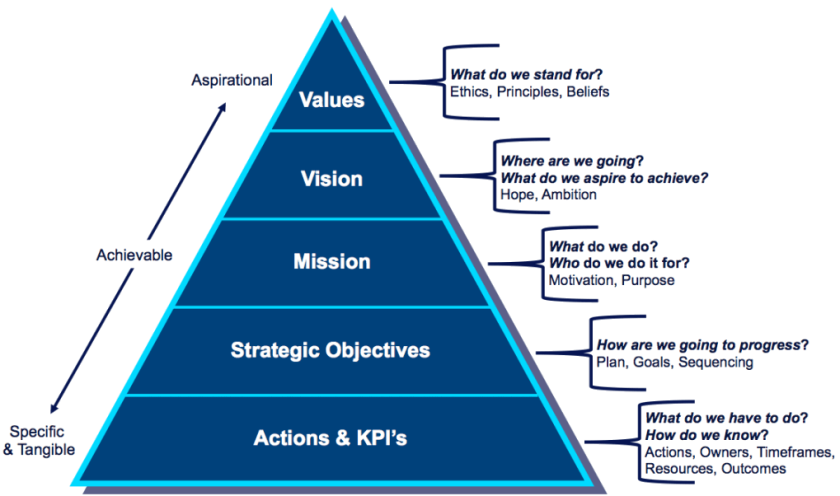
Courtesy of Google Images
Organizational Structure/Strategic Planning
Organizations can have hierarchical and nonhierarchical structures. Hierarchies have tasks assigned to specific positions, workload distributed through job assignments, supervisors that are assigned to specific employees for supervision and power/authority assigned to positions. Nonhierarchical structures work in teams comprised of experts; ant colonies would align most with the latter.
Furthermore, Organizations can utilize different kinds of planning. For example, there is strategic planning, which guides an agency’s strategies, directions, decisions, and allocation of resources. Then there are master plans, which are long term and cover all-encompassing needs of an organization. Finally, there are business plans, which are considered a blueprint for the successful operation of a new venture by providing data that guide business decisions and attract investors.
Remarkably, without a blueprint or a leader, thousands of ants can work as a team to move specks of dirt in order to create a complex, sponge-like structure with parallel levels connected by a network of tunnels. Some ant species even build living structures out of their bodies: Army ants and fire ants in Central and South America assemble themselves into bridges that smooth their path on foraging expeditions, and certain types of fire ants cluster into makeshift rafts to escape floods. Below are a few videos showing the amazing structures that ants can create with teamwork:
Problem Solving
I had an idea to write about for this post, but then I changed my mind because, based on the grading rubric, I realized it might not be the best way to go about writing my final OLP. I think that simple thought process is similar to what Organization and Administration in Leisure Studies is all about, yet on a much larger scale; organizations across the world use a similar process of viewing a situation from a different perspective in order to analyze a problem, create a plan for the situation and implement that plan, then evaluate the situation all over again.

Courtesy of Google Images
This process, known as the problem-solving model, has arguably become an innate and necessary function for entities to function properly in the organization and administration industry. I emphasized arguably because it is possible for an organization to function without some type of assessment process, however, they do not typically function successfully in the long term.
In comparison, ants have survived for millions of years without a specific assessment process, however, they do have innate biological techniques that allow them to function successfully. The video below goes into detail about how ants interact and how that has spilled over into ideas for human systems.
Financial Management & Budgeting
Organizations use an operating budget (day-to-day) and a capital budget (long-term) to function proficiently and manage resources. They use a simple calculation of revenues (income) and expenditures (costs) to determine a budget. Organizations can use many pricing strategies and budgets depending on their desired outcomes.
This excerpt from an article (in work cited) explains well how ants utilize resources to budget:
“How ants deal with operating costs
One important constraint is operating costs. An example is the analogy we call “Anternet”, between the way that desert ants regulate foraging, and TCP-IP, a transmission control protocol that regulates data traffic in the internet.
Both use feedback to deal with high operating costs. Desert harvester ants have to spend water, lost when foraging in the hot sun, to get water, which they metabolize out of the seeds they collect. In the early days of the internet, operating costs were so high that it was not worthwhile to send out data if bandwidth was not available. In both systems, interaction networks avoid extra expenditure – of data transmission, or water – by staying inactive unless something positive happens. A forager does not go out unless it experiences enough interactions with ants that have found food. A data packet does not go out unless returning “acks” (acknowledgements) show that previous data packets had the bandwidth to move on.
By contrast, in the tropical forest, operating costs are low for ants. One species that lives in trees sets up circuits of ants flowing constantly from nest to nest and to food sources, in both directions. Because ants are so abundant and diverse, competition is high. Many species use resources that are also used by others. Interactions are used to generate negative feedback. The system keeps going unless something negative happens. A forager continues along the circuit unless it meets an ant of another species, in which case it is more likely to go back to the nest. An analogy with an engineered system may be a fibre-optics network that continually transmits data unless there is an interruption or a security system that denies access only when a threshold level of incursion is reached.”

Courtesy of Google Images
Ethics/Risk Management/ Policy & Procedures
Ethics, risk management, and policies & procedures are the backbone of a company. Ethics are important because they are organizationally set standards, behaviors, and principles that guide behavior. Risk management is important because it protects an entity and everything encompassing it. The process of identifying and managing risks that cause injury or damage to people or property and then developing a risk management plan and evaluating that plan are the key elements of proper risk management. Finally, policies and procedures provide direction for the company, reassure that employees are treated fairly and provided standardized response to situations, and provide managers confidence and defenses for their decisions.
While unethical behavior is (hopefully) punished within administration, in the ant world it is considered necessary for survival. Ants do not have consciousness and therefore, cannot make ethical decisions; Ant behavior is mostly guided by survival and the way they react (policies and procedures) are innately wired within them. For example, ants may prey on much larger animals such as reptiles, birds, or even small mammals. Furthermore, in a colony, the ants are expendable for specific purposes; After the male ant mates with the queen it will die. While ants do not specifically have a hierarchy, they do protect the queen and larvae to ensure survival of the colony by strategically placing them in areas hard to reach by predators. They also have a cool survival tactic to reduce risk for the greater good; when they die they release pheromones that signal to other ants not to come around that area. Furthermore, when being attacked they release pheromones to signal the other ants to attack, which could be considered the ant version of identifying a risk and implementing a plan. Ants also can identify who is in which colony by smell, thus creating a type of security system. How quickly ants shift what they identify as an intruder, determines how quickly the whole system can adjust its security.

Courtesy of Google Images
The End
In conclusion, while ants may be little and on the surface seem to have nothing to do with organizations and administration, once we dig deeper into the root of the colony we can learn a lot from them. They encompass a vast majority of the planet and some colonies are comprised of millions of ants with specific tasks that all work together as a superorganism. Those that work together can accomplish great feats. An organization thrives on interaction at all levels and partnerships give opportunities for vast expansion. Here is an awesome video that shows the largest ant colony excavation recorded:
I have approached the end of the semester and the end of this class. I am worn out and a little anxious about the opportunities that lie ahead. I have learned so much over the past semester. I came into this class knowing nothing about organization and administration within the leisure industry. I soaked everything up in the beginning and did my best to try to understand it all. The trouble was that I haven’t held any administration job positions and barely worked in traditional job settings. The use of the OLPs helped me integrate my learning into applicable concepts. I appreciate how Dr. McKenzie could relate all of the topics to everyone’s specific majors. I also found that I could communicate ideas on higher levels of thinking than I had previously been able to. I plan to use all the information I have learned from this class to help with my future endeavors. This summer, I will be working at a camp for children with disabilities. I will be trained in adaptive high and low ropes courses, as well as rock climbing and zip lining. I have done the activities, but never taught them so it will great field work for enhancing my teaching skills. The camp is staffed with people from all over the world so I know it will be diverse and interesting. I have never worked at a camp before so it will be a new experience. I am a bit nervous, but more confident knowing that I have the knowledge base and skills needed to learn and adapt to new environments. I think it will be a tangible test of my knowledge and a great opportunity to apply things I have learned from the class, such as how to recognize someone’s management style. I have also been asked to be the President for the McNair Scholars Alumni Association at OSU for next year. McNair is close to my heart and I am honored to be asked to take on such a high position. I will be in charge of many administrative tasks, coordinating people, planning events, and providing communication between OSU and the Association. I will work with the rest of the committee to keep the McNair program running and it will be a real test of everything I have learned in this class. I plan to use the book materials and this blog to brush up on things in case I forget. Everything I have learned is applicable to becoming a future CTRS and I am excited to see how I learn and grow as a professional in the future!
Work Cited:
Ant Colony | ASU – Ask A Biologist. (2016). Askabiologist.asu.edu. Retrieved 5 May 2016, from https://askabiologist.asu.edu/explore/secrets-superorganism
Ants. (2016). Mcwdn.org. Retrieved 5 May 2016, from http://www.mcwdn.org/Animals/Ants.html
charity, O. (2016). Amazing facts about ants | OneKind. Onekind.org. Retrieved 5 May 2016, from http://www.onekind.org/education/animals_a_z/ant/
Google Images. (2016). Images.google.com. Retrieved 5 May 2016, from https://images.google.com/
The Remarkable Self-Organization of Ants | Quanta Magazine. (2014). Quantamagazine.org. Retrieved 5 May 2016, from https://www.quantamagazine.org/20140409-the-remarkable-self-organization-of-ants/
Two lessons from ant colony organization. (2016). World Economic Forum. Retrieved 5 May 2016, from https://www.weforum.org/agenda/2016/01/two-lessons-from-ant-colony-organization/
Your browser is deprecated. Please upgrade. – YouTube. (2016). Youtube.com. Retrieved 5 May 2016, from http://Youtube.com
Dr.McKenzie’s Powerpoints



